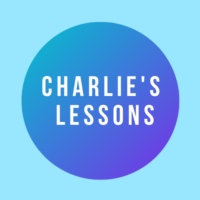I’m Charlie this is Charlie’s lessons and today I’ll be taking you through a teacher tutorial for Blook rush, Blooket‘s new game mode. If this is the first time you’re using Blooket then why don’t you go check out my tutorial right here?
Choosing a question set
Once you’ve made an account on Blooket.com we’re going to go to a question set that you’ve created. Make sure it’s a question set where you’ve got a lot of questions for the students to answer. So, once we’ve got a question set selected we’re just going to go to host and then host again. The minimum to play is two players but the Blooket game mode does recommend team mode.
Time limit
When you do press host and you go to the next screen then you’ll see a recommendation to play in teams. You can then choose the time mode (the default is seven minutes). I personally would have the game last anywhere between five and four minutes.
Entering the Blook Rush game
The students need to visit the Blooket website and enter a code that is displayed. Students also have to choose a Blook that represents them. Now there is also an option to sign up or log in. You don’t need your students to have accounts for any game on Blooket so skip this.
Once all the students have entered the teacher should be able to see all of them. All they students need to do is press start. They go into teams as soon as they join. The teacher will be able to see that both teams have the same number of Blooks.
How to play Blooket’s Blook Rush
The objective of the game is to have the most Blooket at the end of the time limit. When students answer a question correctly they get to choose between, attack or defend. If one team attacks another team who doesn’t defend, that team will lose a shield. The shields serve to protect the Blooks so, when the shields drop to zero and a team attacks, that team with zero shields will begin to lose their Blooks. Attacking a team that chooses to defend will cancel each other out.
If both teams in this case decide to defend they will both gain one shield. If you decide to defend and are not attacked by any team you will always gain one shield. When students get the correct answer, they can usually decide to attack or defend but if they get enough answers right they can add another Blook to their team.
On the teacher’s screen, all the students can see what’s happening and they can see how many Blooks each team has. This is very important because the students need to decide if they need to continue attacking or start defending, and this is where the strategy comes in.
Using Blook Rush as an English teacher
How do we, as English teachers, make the most of this game mode in our classroom?
I like to focus on the fact that the students are playing in teams and strategizing together. I want to focus on the meta language. I’m talking about the language the students are using in their team during the game. Students have to speak to each other and make decisions almost instantaneously about what they’re going to do in the game. For example; attack or defend?
So, the students are going to be making decisions about which team they need to attack. I ask my students to make these decisions in English, so you need to teach your student’s language of recommendations, advice or obligation. Even conditionals, for example;
If we don’t attack this team they will get stronger
We should attack this team because they have more Blooks than us
We are winning so we should defend now and
English metalanguage in games
This is something that we often forget about teaching our students when we do play games. Board games for example, need students to know how to say things like “it’s my turn”, “it’s your turn” , “can you give me the dice?” “are you going to roll the dice?”, “Can I have a card please ?”. Teaching your students this language then it means that the whole game is played out in English.
If you do play Blook rush with your students then leave a comment below and tell me how you got on!
